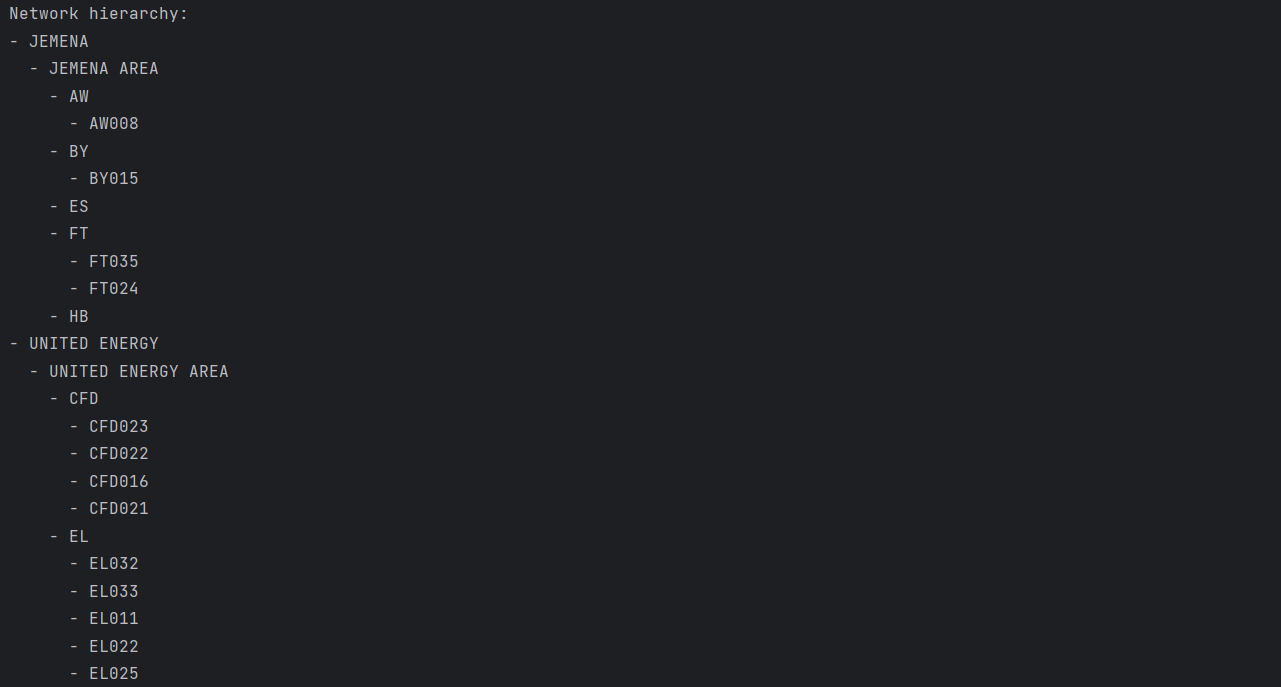Fetching Network Hierarchy
This tutorial demonstrates how to use the NetworkConsumerClient to connect to a gRPC service and fetch information about a network hierarchy from the EWB server.
The code is organized to demonstrate how to establish a connection, retrieve the network hierarchy, and print the information in a structured manner.
Getting Started
Ensure that you have imported necessary modules from the Zepben library.
from zepben.evolve import NetworkConsumerClient, connect_with_token
import json
Establish Connection
Before connecting, ensure that you have a config.json file that includes the connection parameters, such as host, access_token, and rpc_port.
Here is an example of the config.json file format.
{
"host": "your-ewb-hostname",
"access_token": "your-access-token",
"rpc_port": 1234
}
Now, establish the connection by using the connect_with_token function, which securely connects to the EWB server using an access token.
with open("config.json") as f:
c = json.loads(f.read())
channel = connect_with_token(host=c["host"], access_token=c["access_token"], rpc_port=c["rpc_port"])
Create a Consumer Client
After establishing the connection, create a NetworkConsumerClient using the provided channel.
client = NetworkConsumerClient(channel=channel)
Fetch and Display Network Hierarchy
You can fetch the network hierarchy by calling the get_network_hierarchy method on the NetworkConsumerClient instance.
Once you have fetched the network hierarchy, you can iterate through the hierarchical structure and print information about each level (that is the geographical regions, sub-geographical regions, substations, and feeders).
In this example, indentation is used to help represent the hierarchical relationships clearly.
network_hierarchy = await client.get_network_hierarchy()
print("Network hierarchy:")
for gr in network_hierarchy.result.geographical_regions.values():
print(f"- {gr.name}")
for sgr in gr.sub_geographical_regions:
print(f" - {sgr.name}")
for sub in sgr.substations:
print(f" - {sub.name}")
for fdr in sub.feeders:
print(f" - {fdr.name}")
Sample Output:
